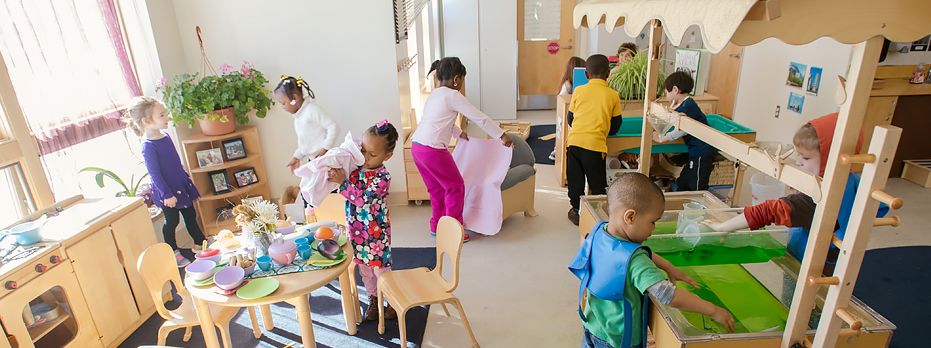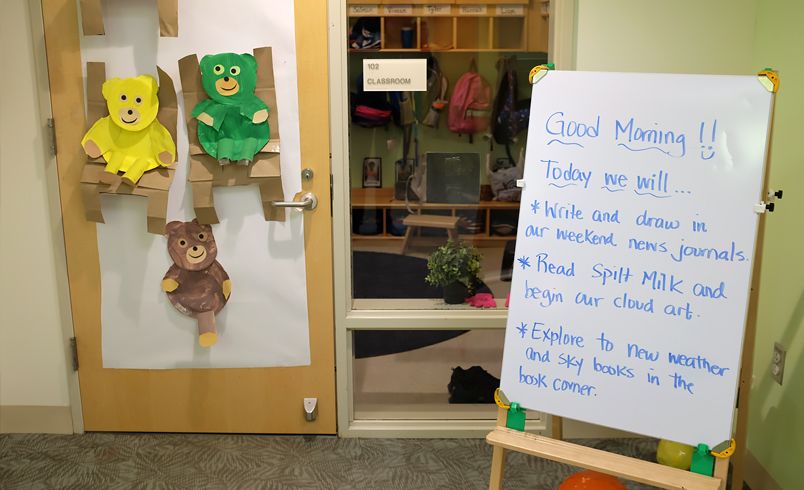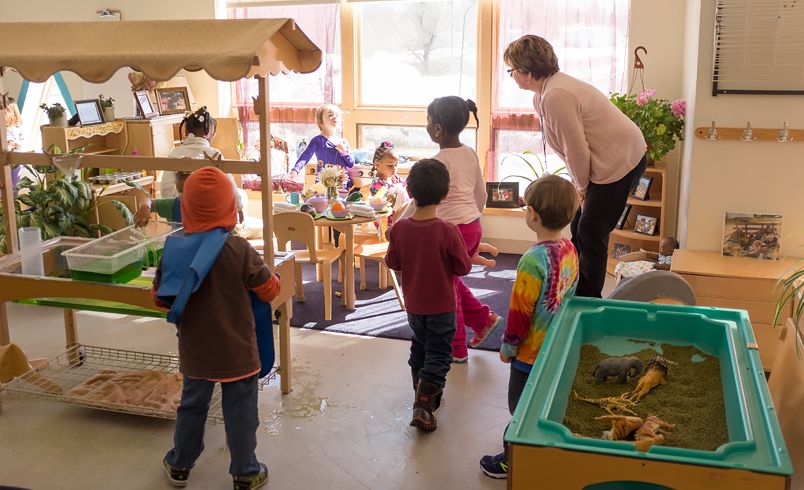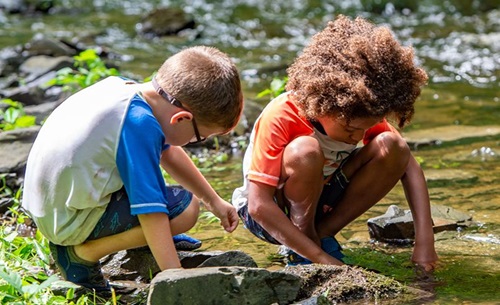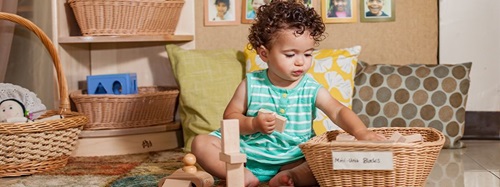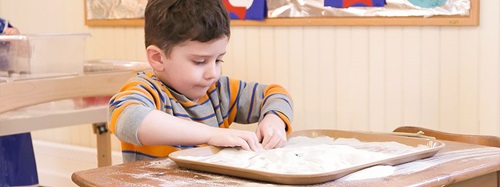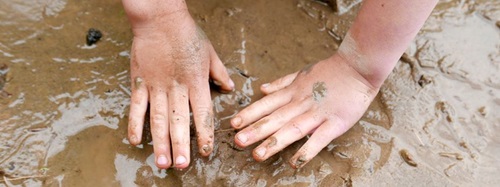Establishing a Relationship with New Families
The Importance of the First Impression
| April 2017“As soon as I walked into this center I thought, ‘This is amazing. I love it. Please can I pay the deposit right now?’ I just had a feeling about it.”
This experience of a parent looking for child care, may sound similar to what families tell you as they search for the right place for their child. They often talk about it “feeling right.” Two facilities may have the same toys and a similar layout, yet parents say they had a feeling that one was a better fit for their family and their child. Research confirms that regardless of how a center is found, it is often this “feeling” parents experience as they tour a facility that is fundamental in choosing to enroll their child.
Such feelings are difficult to analyze, and even more difficult to replicate as little is formally documented about the criteria or reasoning processes parents use when selecting early childhood facilities (Elliott 2005). Although parents may say they are looking for quality, a lot of the time their decision comes down to other practical factors such as location (Peyton 2001).
It is possible, however, to understand which experiences foster a positive psychological impression. Generally, the majority of parents look for a facility that has friendly and approachable staff; offers a curriculum or structure; and provides a safe and stimulating environment. Ratios, teacher experience, location, and cost also factor into the decision (Banks 2013).
You may only have one opportunity to show your facility to a potential family. The first meeting is a vital time to establish that feeling of “rightness.” What follows are ways to improve the initial contact.
· Maintain an Open Door Policy
Parents are turning over a key caregiving role of their child to you, often for the first time. Openness, in the form of offering tours to families without appointments and being flexible to their needs can help create a bond of trust between you and families from the outset.
· Introduce Staff as You Tour
When parents visit your facility, introduce them to the teachers in the classrooms by name. Name tags or photographs with a short biography placed outside the classroom door are two ways to assist families in familiarizing themselves with teachers. If it is possible, encourage teachers to talk with parents about their room and their program; or to ask a question about the child’s interests, temperament, etc. This may require someone to support the teacher by assuming duties during this time. A floating teacher or the person who is conducting the tour may fill this role. If teachers are comfortable speaking with parents and sharing their work, this can make the tour experience more like a real day and aid parents in feeling that in this center the staff are knowledgeable, approachable, and friendly.
· Make it Personal
It’s powerful for parents to be able to visualize their child at the center. Be positive in your approach. Use the child’s name as you tour: “Akina would be in Miss Brenda’s room. Each child has a cubby and Akina would be able to store her bag and supplies in this area.” Ask the parent if they see anything that they think their child might like to do or that may be a concern. (For example, “Is Akina used to eating at a large table? We serve our meals family style.”) Offer parents the chance to raise any concerns, and even ask them how they support/handle different caregiving situations, such as eating and cleaning up. Envisioning the child as being a member of the group may help parents develop a feeling of already belonging.
· Look for Unique Expectations
Just as each child is an individual with different needs, so too are families. Make a point of asking what the parent is looking for when choosing a facility. Do they want a place that is close to their workplace or somewhere with longer hours? Are ratios important to them or the curriculum? What are the “must haves” for them when choosing a program? You cannot know what parents expect if you haven’t had a conversation with them about their needs and desires. Although you may want their business, your facility may not be the best fit for them.
By openly sharing with parents what you can offer to fit their needs, and pointing out where your program and their needs match, you are developing a reputation of honesty, which further builds trust.
· Follow Up Questions
At the end of the tour encourage parents to ask any more questions they may have. Provide them with a resource packet that gives information about your facility and a list of questions and answers about what to look for in a childcare facility. The National Association for the Education of Young Children (NAEYC) has a site for families with guides that provide help in looking for quality child care http://families.naeyc.org Sharing this information allows the parent time to reflect afterwards, investigate further, and maybe ask more questions to find the best fit for them.
Before they leave, ask the parent if it is okay for you to give them a call in a day or two to follow up (and be sure to do it). You may consider inviting them back for a second tour that would include their child. (During this visit, you would focus more on the child instead of the facility.)
By now families have a “feel” for your facility. You have responded to their questions, provided information about what they can expect for themselves and their child, and guided them in understanding what you have that may best fit their needs. By thinking about the criteria a parent may use when seeking a facility to care for their child, and by sharing information that is open and honest, you have taken the first step in establishing a trusting relationship with a new family that will hopefully continue to flourish at your center.
Staff Training Suggestions:
- Discuss the process of staff involved tours prior to implementing it.
- Assist and advise on what to include, such as a typical day in the classroom, how nap time is handled, and arrival and departure procedures.
- Encourage staff to highlight their strengths.
- During a staff training session, have teachers role play in order to practice and prepare what points they would like to share with visiting families, and imagine the situation from a parent’s perspective.
- Offer teachers cards with questions parents would typically ask on a tour, and work in pairs to come up with responses.
- Share as a team and offer feedback on the different scenarios and questions.
- Even novice teachers should be encouraged to participate.
References:
Banks, M. 2013. Relationships in Early Childhood Education and Care: A qualitative study of the parent-teacher relationship from parents’ perspectives. Masters thesis University of New England.
Elliott, R. 2005. “The Communication Accretion Spiral: a communication process for promoting and sustaining meaningful partnerships between families and early childhood staff.” Australian Journal of Early Childhood, 30(2): 49-58.
Peyton, V., A. Jacobs, M. O’Brien & C. Roy. 2001. “Reasons for choosing child care: associations with family factors, quality, and satisfaction.” Early Childhood Research Quarterly,16: 191-208.

